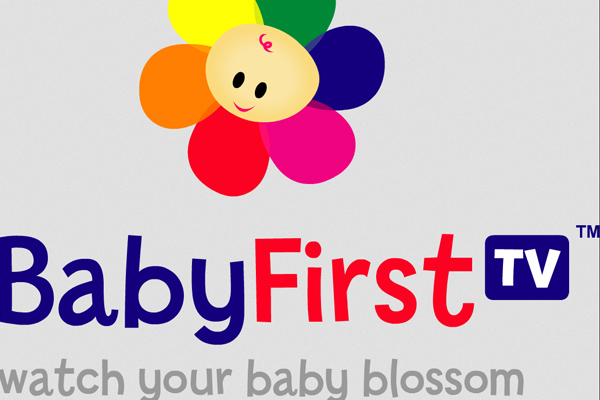By Joe Flint / The Wall Street Journal You’ve heard of couch potatoes. Here come crib potatoes
In the ultracompetitive children’s-TV market, most networks don’t target viewers any younger than four years old. One channel is now testing that boundary.
BabyFirstTV, which is making its way into more U.S. homes after cutting deals with pay-TV distributors including Time Warner Cable,is aiming its programming at children as young as six months.
The channel, owned by closely held BFTV LLC, carries mostly animation programs that focus on rudimentary skills including counting, vocabulary and differentiating shapes and colors.
The notion of targeting infants is controversial. The American Academy of Pediatrics recommends no television for children under the age of two, arguing that children learn best by interacting with people. But that may be wishful thinking. A Kaiser Family Foundation study found most babies are watching some television.
“What is important is what we put our kids in front of and we think we are offering the cleanest, safest alternative,” said Sharon Rechter,who co-founded BabyFirst with her husband Guy Oranim.
Building a TV channel when more U.S. consumers are “cutting the cord,” or dropping pay-TV service, will be challenging. And BabyFirst faces fierce competition in the wider children’s-TV market, a crowded field that includes Walt Disney Co.’s Disney Channel and Disney XD, Viacom Inc.’s Nickelodeon and Nick Jr. and ComcastCorp.’s Sprout. Amazon.com Inc. and Netflix Inc., as well, are courting little ones with their streaming services.

In 2014, advertisers spent $1.2 billion on kids channels, according to Kantar Media. Pressure from watchdog groups and regulators has led some companies including snack food and candy manufacturers to steer clear, but other sectors have stepped up including packaged-goods manufacturers hoping to sell to the parents watching with their kids.
BabyFirst’s advertisers include Honest Co., which makes organic products such as shampoo, and ABC Mouse, an educational website.
“It really is trying to speak to a mom when she is engaged with the programming she is watching,” said Darcy Bowe, a vice president and director of Starcom USA, a media-buying firm.
Some marketers say they are waiting for the channel’s Nielsen ratings before they move ahead with advertising deals. “We’ve seen some good proposals from them, and certainly think the model has merit. However, measurement remains an issue,” said Sharon Cullen, a managing director at media agency OMD.
Ms. Rechter said research by Kantar Media determined the average daily viewership is 108 minutes and that one out of every three mothers is a viewer.
One positive for BabyFirst is that expenses are low, compared with most TV channels. Much of the content is visual, with little dialogue, and the programming doesn’t require much dubbing to work in international markets.
Mr. Oranim and Ms. Rechter said the annual operating expenses for BabyFirstTV are less than what it costs to make one episode of HBO’s “Game of Thrones,” which costs about $7.5 million.
BabyFirst expects to make a profit in the fourth quarter of this year, but declined to provide further details on its finances.
Distributors of BabyFirst say the channel’s popularity is growing. “It’s a good service that has very loyal fans,” said Dan York, chief content officer at DirecTV.
BabyFirst’s programming is mostly low-cost animation made in Israel where both Ms. Rechter and Mr. Oranim have ties. Shows such as “Baby U” and “Rainbow Horse” typically run between three and seven minutes.
Ari Brown, an Austin, Texas, pediatrician and lead author of the AAP’s television policy, described BabyFirst as “Muzak for babies.” Though she isn’t in favor of children under two watching TV, Dr. Brown said BabyFirst won’t make a tyke an “ax murderer.”
BabyFirst relies on a network of about 500 mothers as a sounding board. Autumn McCall of Downey, Calif., credits BabyFirst with helping her daughter Violet learn the alphabet and numbers.
“I know there is a lot of criticism about babies and young kids watching TV, but I think in moderation and with parent supervision it can be a great benefit,” she said.
How BabyFirst figures out what will intrigue a toddler isn’t always the most scientific process. Sometimes it just comes down to what’s more compelling—content or candy.
Earlier this year, Ms. McCall’s daughter Violet, who is now two, took part in a test for a mobile app in development—the apps are aimed at keeping babies and parents engaged in BabyFirst content away from the TV. This app teaches matching skills and features Harry the Bunny, one of the channel’s characters.
To see how engaged Violet was in the app, BabyFirst educational director Todd Eller offered a lollipop in exchange for the iPad. Violet took hold of the lollipop for a second but ultimately stuck with the game.
“It’s a real big win,” said Ms. Rechter of Violet’s choice. “Typically, nine out of 10 choose the lollipop” when BabyFirst is testing new games.
A few minutes after BabyFirst was done with Violet, an 18-month old boy tried to take a bite out of the iPad.
“Him we’re not getting,” Ms. Rechter said.
Write to Joe Flint at [email protected]

